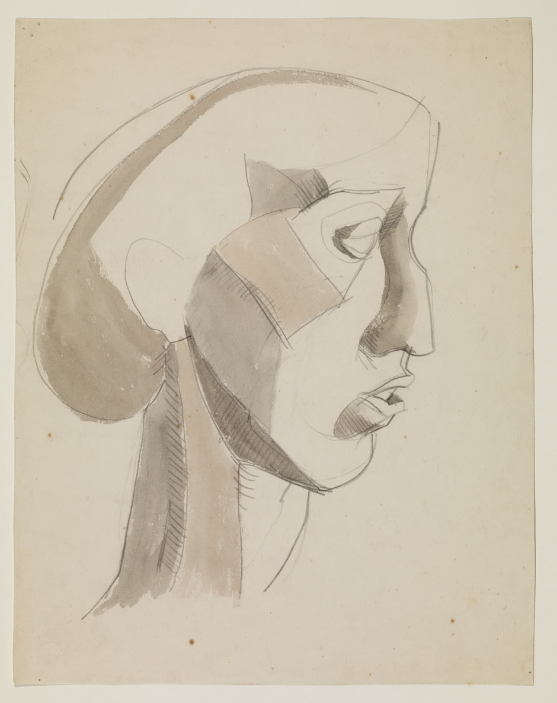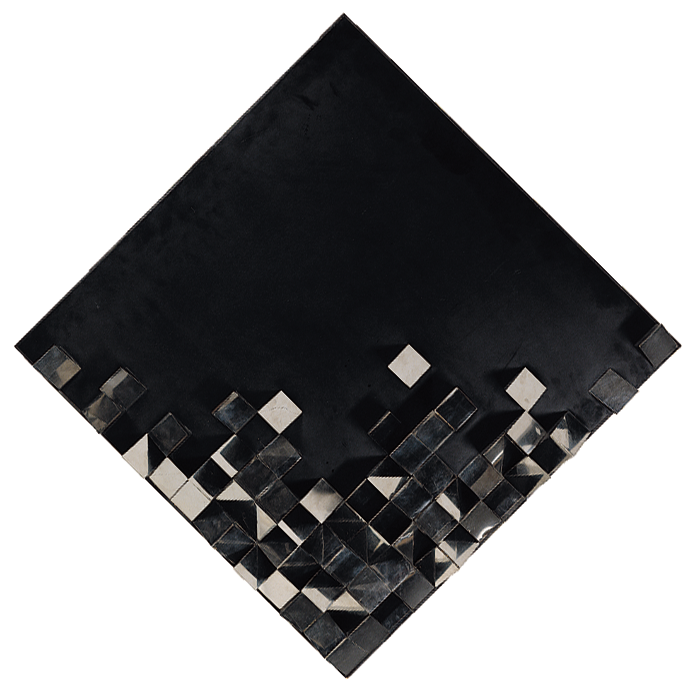As part of our ongoing series to celebrate the collections of our partners and the Courtauld Gallery, this week Anna Liesching, Curator of Art at Ulster Museum, chooses works by two outstanding female artists working in male-dominated movements in the early 20th century.

As part of the Courtauld Connects project I was lucky to visit the Courtauld works on paper store to spend the morning with Dr Ketty Gottardo, Martin Halusa Curator of Drawings. The main purpose of my visit was to select work for our upcoming loan, but like any curator visiting another collection’s store, I could not miss the opportunity to see the range of work held and hear from Ketty about the collection and her work.
My main take away from the day was the sheer range within the Courtauld collection. Like many, I associate the collection with the Impressionists, so it was wonderful to see the breadth demonstrated through works by Rembrandt, Michelangelo and Dürer. I have returned to my photographs of the visit many times. The significance of that day has also grown, it was three weeks before lockdown (what feels like a lifetime ago) and was actually the last time I was in any kind of collection store!
I keep returning to this work by Helen Saunders, and my delight to know that Courtauld still actively collected. This was something of which I was not aware, that I see now should not have been surprising. So when asked to take part in this blog series I wanted to select a piece to highlight this contemporary collecting.
I was vaguely aware of Saunders existence, mainly that she was a member of the Vorticists and that was only through my particular research interest in the work of women artists.
Helen Saunders was born in 1885 in London. She studied at the Slade, something recognisable in her figurative work. I always think you can spot a Slade student from that time because so much attention was put on study in the life room. She then went on to the Central School of Art and Crafts. She exhibited widely in her early career and was one of only two women who signed the Vorticist manifesto, Blast 1, in 1914, along with Jessica Dismor.
I have always been drawn to the Vorticists, and the fact that they were such a brief movement. Only really flourishing between 1912 and 1915, it still had an impact on the artists involved and many since. I’m particularly captured by art movements that have reacted to wider moments of change in society, and that set out to agitate and rail against the structure of the art system. Vortisicm reflected the energy of the modernist era, working in abstraction, often taking inspiration from machinery. It could also be considered that Vortisicm foreshadowed the impending violence of the First World War in the violence of some of some of the work produced.
However this work is not from that time. It is, in fact, a portrait of Blanche Caudwell. Though it is a figurative work, it still reflects her use of shape from her Vorticist days. Following her involvement in the movement, Saunders’ style moved towards the figure and landscapes. Saunders met Blanche Caudwell in 1933 and they shared a flat from the mid-1930s until Caudwell’s death in 1950. Caudwell frequently sat for Saunders during this time.

As I primarily look after works of art on paper, and fine art by local artists, I wanted to choose something from the Ulster Museum collection that I do not often get the opportunity to write about. I have selected this piece by Mary Martin, another woman who was a member of a male dominated group that innovated artistic practice- the British Constructivists.
Born Mary Balmford in 1907, she studied at Goldsmiths’ College and then at the Royal College of Art. She exhibited with the Artists International Association, whose membership was 40% women, from 1934, mainly as a still-life and landscape painter. It is interesting to note that because the gallery and academy system was so closed, many women artists exhibited as part of groups as this was often they only way they could get their work seen. You will often find that exhibition groups had large proportions of women members.
Mary Martin was one of the most influential Constructivist artists of her generation. The British Constructivist Group often created work that centred on the ‘act of assembling’ and saw an importance in the form and aesthetic of mathematical principals and geometric composition. Similar to the Vorticists, the British Constructivists were concerned with new principles of design and environment, but possibly in a more conceptual and reimagined way and less reactive to their current environment. Also similar in how the Vorticists were reacting to European Cubism and Futurism, the British Constructivists were creating their own vision and revival of a movement that derived elsewhere (though 30 years before) Russian Constructivism.
Martin often used natural elements as inspiration and developed from that, specifically the idea of natural elements moving away from a central force – dispersal. For example, Dispersal on Black uses half cubes arranged to combine reflections and open planes. The mirrored shapes are not clustered together in the centre, but disperse towards the edges. She often described this as a ‘super-pattern’. She used drawings to create ‘workings out’ in order to decide on the final construction for a relief piece, these drawings were often displayed alongside the works.
Mary Martin is often associated with her husband Kenneth Martin, also a member of the British Constructivists. They often worked together collaboratively, most notably on the Environment section of the ‘This is Tomorrow’ exhibition the Whitechapel gallery in 1956.
I am also drawn to this piece knowing of Martin’s link to Belfast. The screen she was commissioned to design for Musgrave Park Hospital in 1957 placed her vision of a new era within my own built environment.
Find out more:
An example of Saunder’s Vorticist work from the Courtauld Collection is currently on show in the Artful Line virtual tour, curated by the Harris Museum, Art Gallery & Library.
The collections of Ulster Museum, including other works by Mary Martin, can be explored through their website.

